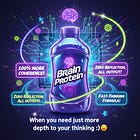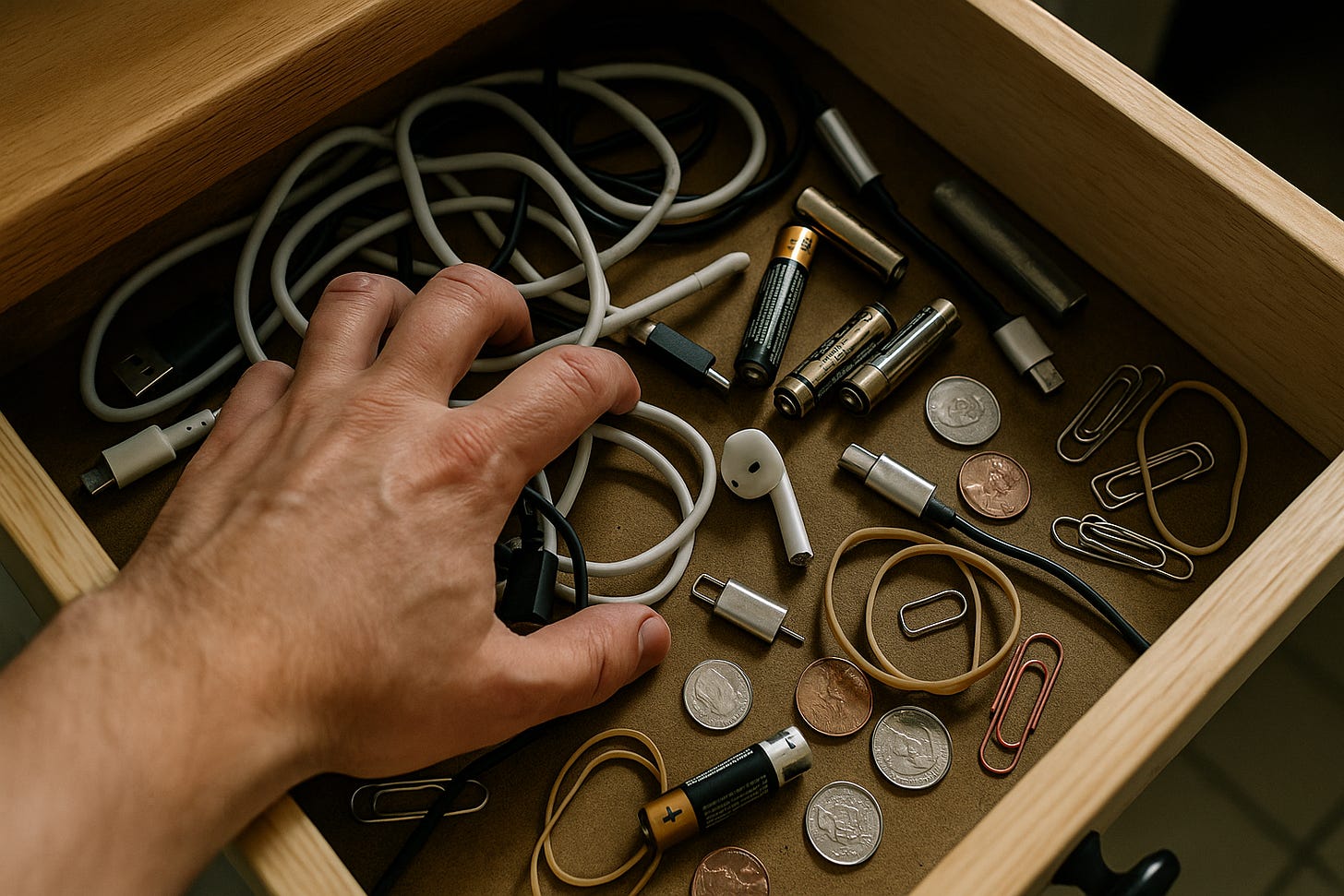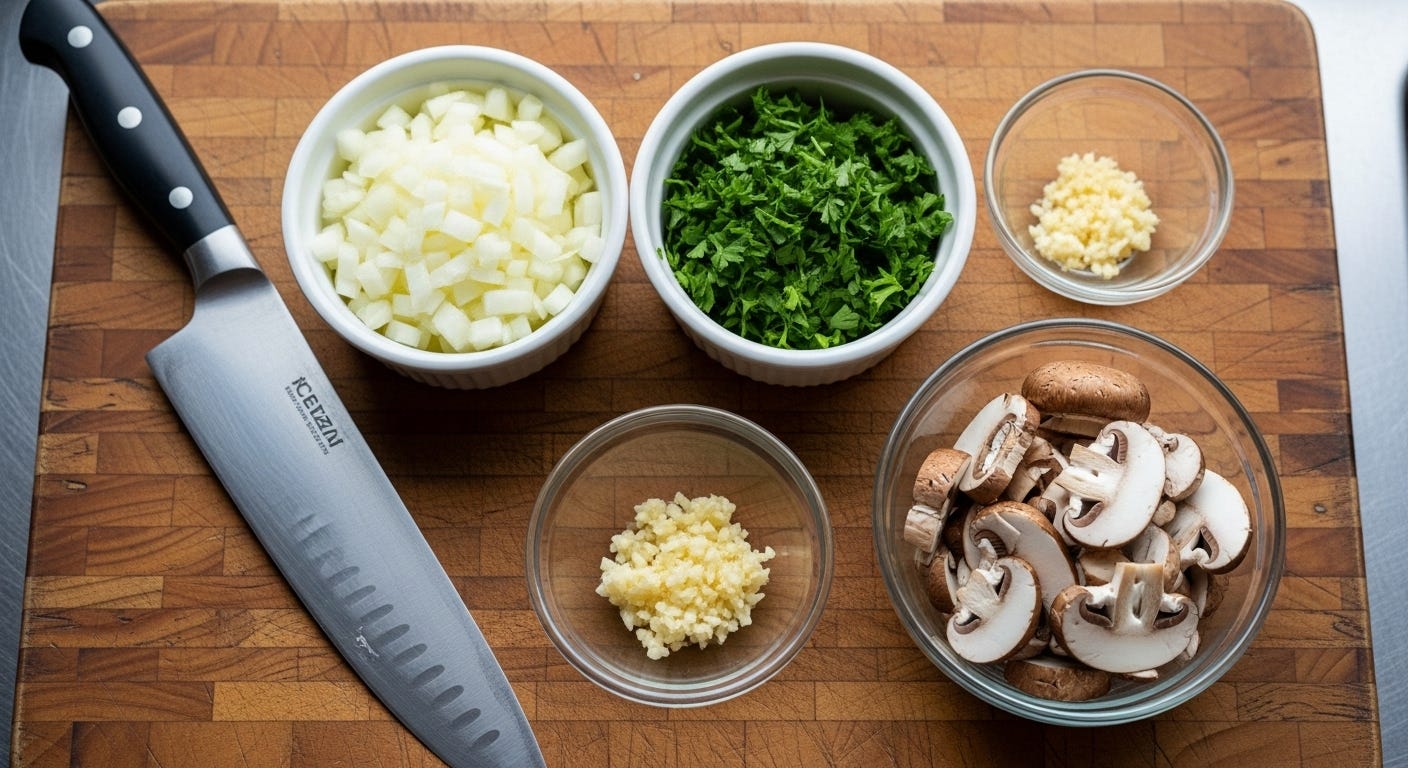The Chef or The Customer
How to Cook Your Own Ideas in the Age of AI Fast Food
I’ll admit it. There’s a two-second ritual I perform that I’m not proud of, one I fight but still repeat. It happens whenever I discover a new writer or thinker, especially here on Substack. Before I commit to their ideas, before I let their words sink in, my eyes perform a subtle, almost imperceptible flick.
I’m checking the number.
The subscriber count. The likes. The follower list. A single, blinking digit that has become my brain’s shortcut for a question that deserves a lifetime:
Is this person worth my time?
It’s a coping tactic in an overloaded feed, but the judgment it produces feels hollow, like tasting something without flavor. This shortcut has a quiet emotional cost: a creeping sense of inauthenticity, the dread of defending an idea you’ve only validated by proxy. It is the slow corrosion of real knowing.
This isn’t just a harmless habit. It’s a symptom. It reflects a way of thinking that values the container over the contents, the polish over the substance. And as AI generates infinite containers, recognizing this ritual is no longer just intellectual curiosity—it’s survival.
So we have to ask:
How did we end up vetting ideas based on the container, not the ingredients?
This ritual is a small symptom of a much larger pattern. In this series, we've explored how our minds are built to be digestive systems, not storage units, and examined the internal warning signs that tell us when we're skipping the meal. Now, we're turning our gaze outward to the environment itself: the toxic diet that produces these symptoms in the first place.
You’re Not Broken, You’re Malnourished
The problem isn’t laziness or lack of intelligence. Our minds are simply trying to digest a diet of chaos and they’re reacting rationally. This is not personal failure but an environmental illness, a three-part syndrome that starts outside us.
1. The Environment: The Junk Drawer Effect
We live in a tsunami of information—disconnected headlines, hot takes, and half-read articles. Minds built for slow cooking are force-fed raw, undigested facts. They become cognitive junk drawers: overstuffed with snippets but containing no real meals. Information accumulates without becoming understanding.
2. The Behavior: The Multiple-Choice Reflex
Faced with this chaos, the mind reaches for shortcuts. We look for simple proxies—like follower counts—to spare ourselves from synthesizing the whole drawer. We develops a Multiple-Choice Reflex. It feels efficient, like a sugar rush, but provides no nourishment.
3. The Consequence: The Flat Soda Feeling
The result is cognitive malnutrition. We are full but not fed. Knowledge feels borrowed, not earned. This is the Flat Soda Feeling—the ability to recite an answer without the feeling of ownership. Our knowledge feels like it belongs to someone else because, in a way, it does. It's the inevitable cost of a diet made of empty calories. And because it never quite lands, you go back to the feed for another hit. The drawer refills. The loop tightens
From Consumer to Chef: The Core Techniques
How do we move from passive consumption to active cooking? By practicing the essential techniques of the kitchen. For every symptom, there’s a counter-move:
Signal 1: The Junk Drawer Effect
The Tell: An hour of "research" has passed. You have twenty tabs open and a dozen articles saved, but you'd stumble if someone asked for the core idea. Your mind is full; your understanding is empty.
The Trap:
AI’s “summarize these ten articles” function is the ultimate junk drawer organizer. It tidies the mess but cooks nothing. This encourages accumulation over synthesis, leaving you with a neat list of ingredients you have no idea how to combine.
The Test (10 seconds): The One-Question Check.
Before adding another link to the pile, stop. Ask: “What is the single, specific question I am trying to answer right now?” If you don’t have one, you’re just collecting clutter.
The Turn (3 minutes): The Essential Question Filter.
Close all the tabs. Set a timer for three minutes and write down that one essential question. Now, look at your sources. Delete, close, or discard anything that does not directly help you answer it. This move from collecting to culling is the first step in any recipe. It’s how you clear the counter to actually start cooking.
Signal 2: The Multiple-Choice Reflex
The Tell:
You feel that internal pressure for the “right answer,” the “best option,” the simple box to tick. An AI recommendation provides a single, polished, unambiguous answer, and a wave of relief washes over you.
The Trap:
AI is a conviction machine. It's designed to deliver polished, authoritative answers that discourage doubt, training us to seek the easy conclusion. This weakens the mental muscles needed to hold nuance or weigh competing truths.
The Test (10 seconds): The Ambiguity Twitch.
Notice that feeling of relief when you get a simple answer. That little twitch of comfort? It's the signal you’re outsourcing your judgment.
The Turn (2 minutes): The Devil’s Advocate Drill.
Take the AI’s confident, number-one answer. Your next prompt is: “What are three credible, intelligent reasons this answer could be wrong?” Spend two minutes seriously considering the counter-argument. This isn’t about creating confusion; it’s about building resilience. A meal with only one flavor is bland; an idea with only one perspective is fragile.
Signal 3: The Flat Soda Feeling
The Tell:
The work is done. Your report is written, the slide deck finished. It’s objectively correct, looks great. But you feel nothing. No spark of discovery, no moment of insight, no “aha!” It feels like you’re presenting someone else’s work.
The Trap:
AI skips the messy, frustrating, human process of discovery. Because of this, the output is often stripped of the very struggle that creates ownership. It delivers the destination without the journey, leaving you with a souvenir you don’t remember acquiring.
The Test (10 seconds): The Insight Buzz-Check.
Scan your work. Can you pinpoint one moment in its creation that gave you a small jolt of excitement or surprise? If not, the work probably has no sparkle.
The Turn (5 minutes): The Socratic Spark.
Take your final, polished conclusion and feed it back to the AI with this prompt: “Forcefully argue for the exact opposite of this conclusion.” For five minutes, your only job is to defend your original idea against the AI’s critique. This controlled friction is like searing a steak—it creates the flavor, the color, the crust. It’s how a correct answer becomes your truth.
The Chef or The Customer
These are not isolated tricks but a rhythm for reclaiming authorship:
PAUSE → PROBE → PROCESS → POSSESS
Each step activates a critical enzyme in your mind:
PAUSE: The essential metacognitive break that stops the assembly line.
PROBE: You ask the critical counter-question. Here, you’re activating the enzyme of Evaluation—consciously assessing an idea’s nutritional value, not just its packaging.
PROCESS: You rewrite, you sketch, you argue with the premise. You’re now using two enzymes at once: Analysis (breaking the idea down) and Inference (absorbing the nutrients to form your own conclusions).
POSSESS: This is the moment it becomes yours. You can articulate it in your own voice, with your own examples. This is the act of Explanation—the final proof of nourishment.
This protocol is more than a way to think. It’s a way of being. It’s the conscious choice to engage with the world, not just consume it.
AI has made it possible to live entirely on intellectual fast food—perfectly packaged, instantly served. The cost is your kitchen.
The question is no longer if you will use these tools, but who you will be when you do. Will you be the customer, forever consuming the conclusions of others? Or will you be the chef, using the best tools available to cook a meal that is uniquely, irreplaceably, and proudly your own?
So, what's the first meal you're going to cook?








As someone who often finds myself overwhelmed by information - both when reading, and writing - I loved this. Really useful
“Intellectual fast food” - great way to put it. I think that’s why having clarity about the level of information you’re going for is so important and giving yourself time process it. With AI we can easily go into rabbit hole mode or tangent mode and basically come out with nothing from all that 😅